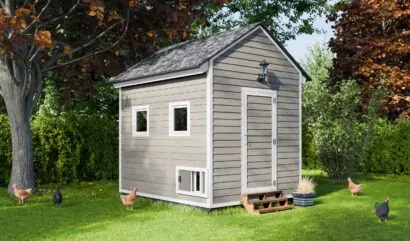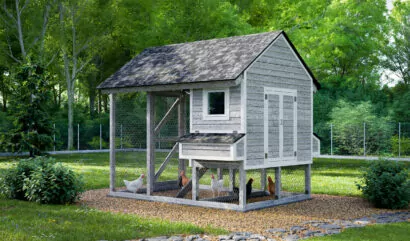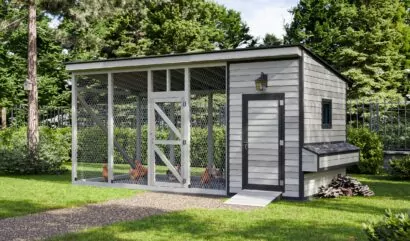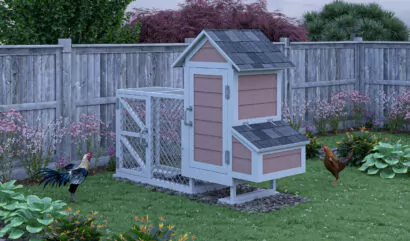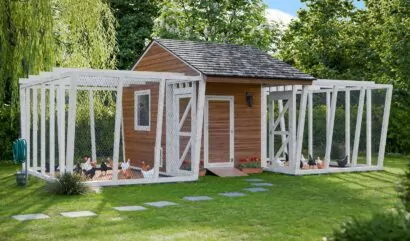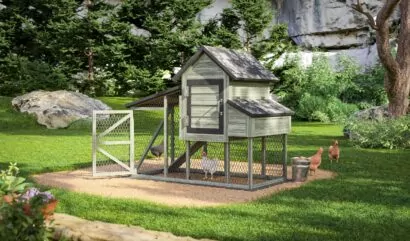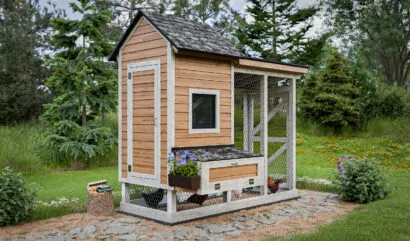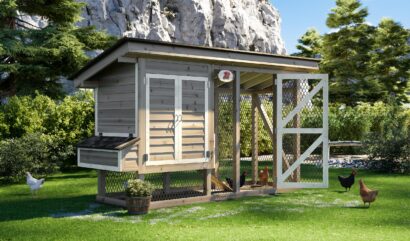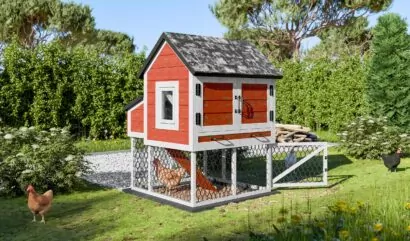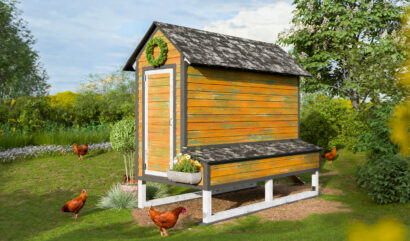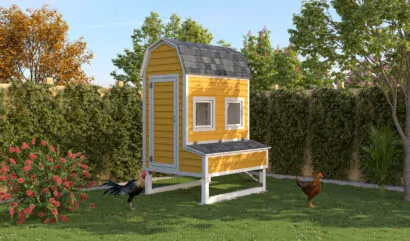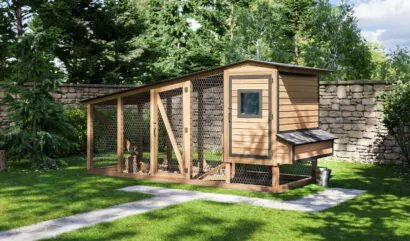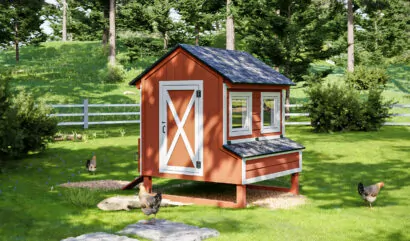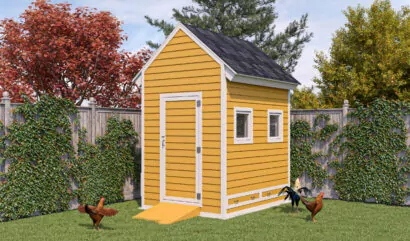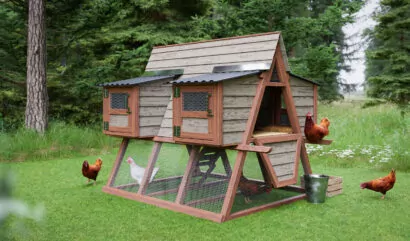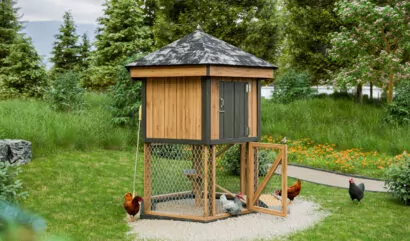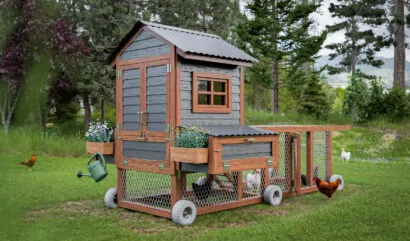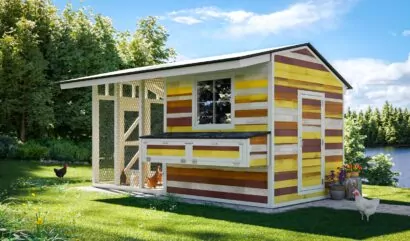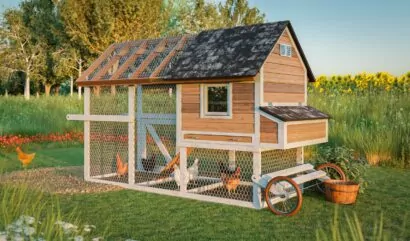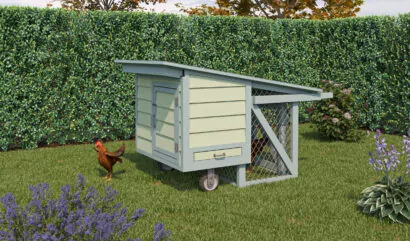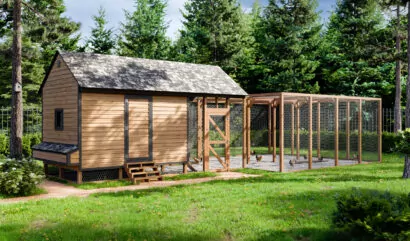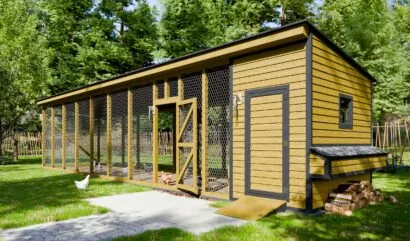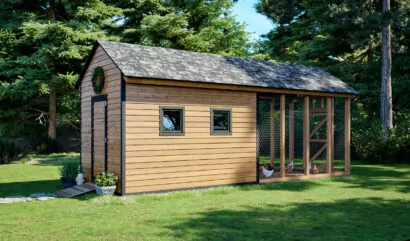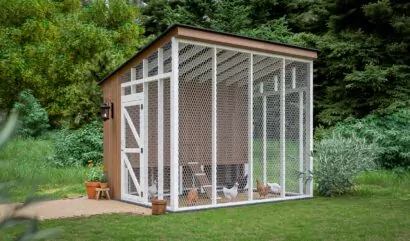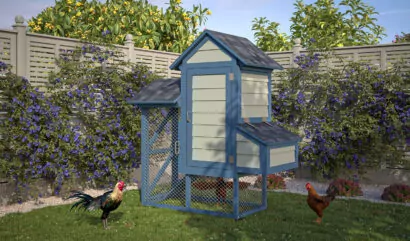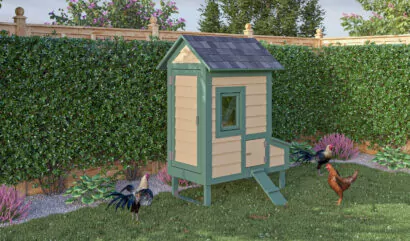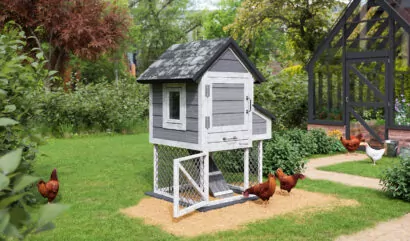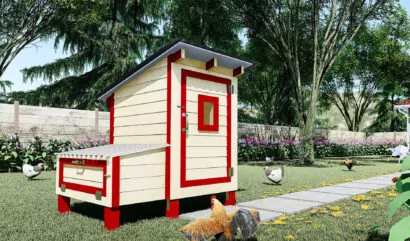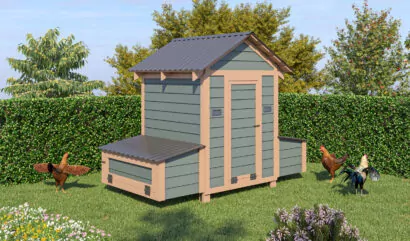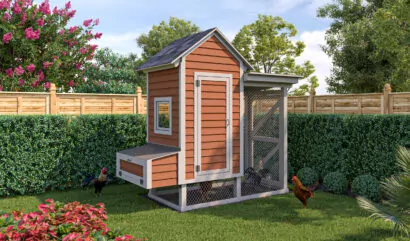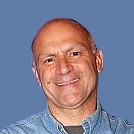Choosing the Right Chicken Coop Plan for You
Whether you’ve always wanted to raise backyard chickens or you’re just beginning to toy around with the idea, finding a coop that’s a good fit for your yard is a smart start to creating an area that can support a flock. Here, we’ll cover everything you need to know about choosing the right coop plan, including size, placement of essential features, and budget considerations.
Getting Started: Sizing and Placing Your Coop
The interior space of your coop is crucial for your chicken’s happiness and overall health. Raising too many chickens in a small coop will lead to overcrowding, stress, quick disease spread, pecking disorder issues, and reduced egg production. A large coop will be more comfortable for your chickens in warmer months, but it can become seriously pricey to heat in the winter.
First, consider how many chickens you would like to have. Most experts recommend two to four square feet of coop space per standard-size chicken. If you’re raising larger breeds, they’ll need more space. You’ll also need to consider how often your chickens will be in their coop. If they’re going to be confined for longer periods, they’ll need more space than if they’re spending a significant amount of time outside of their coop foraging in your yard. A chicken run (an outdoor space that’s enclosed with poultry wire where chickens can exercise, take dust baths, etc.) is an important consideration as well. Plan for about 8 to 10 square feet of running space per chicken, and make sure your coop design makes it easy for chickens to exit and enter the coop from the run space.
Where you place your coop matters – choose a location that’s protected from adverse weather elements like heavy rains, wind, and snow. A south-facing coop is ideal for your birds as it provides adequate morning sun penetration and shade during hot afternoons. Excess humidity can increase the spread of illness within a flock, so it’s important to keep moisture out of the coop as much as possible. Be sure to create an adequate drainage system in your coop, as this can help to prevent muddy conditions and moisture buildup. Excessive moisture can also cause wood rot and mildew growth. Next, we’ll take a look at some other features that can help you create a comfortable living space for your chickens.
Essential Coop Features
Now that you understand how big your coop will need to be to support your flock, it’s time to consider features in your coop that will keep your chickens happy and healthy.
Some factors to keep in mind when creating your chicken coop include:
- Airflow: Creating a comfortable interior requires proper ventilation to enhance airflow. Inside the coop, provide your chickens with roosting bars that offer at least 10 to 12 inches of space for each large breed of chicken.
- Nesting boxes: Nesting boxes provide a comfortable, private space for your hens to lay eggs. Plan for at least one roomy nesting box for every 3 to 4 hens.
- Access points: Caring for your chickens can be tough without simple access points. Features like drooping panels and removable trays can simplify the cleaning process, and adequate access points can help you check on your chickens, collect eggs, and keep the coop clean.
- Security: Choosing a coop design that protects your flock from predators is important. Creating a coop with secure latches on windows and entryways can help ensure your chickens stay safe. For added security, have your coop raised slightly above the ground, and take extra precaution to ensure predators can’t burrow under the fencing and into the coop.
Coop Styles, Materials, and Your Budget
When it comes to choosing a coop style, you’ve got plenty of options. A classic A-frame design is simple to build and easy to keep clean, while a Dutch-style coop offers more space. And many chicken flock owners prefer a combination of classic A-frame and Dutch-style coops.
Mobile chicken-tractor coops are movable and can be a smart option if you’d like to provide your chickens with regular access to fresh grazing areas. This can also be a good fit if you live in an area where weather changes are common, as you’ll be able to move the coop in the event of flooding or other weather conditions that aren’t conducive to the health and comfort of your chickens. Quaker coops are another popular option, as these styles have an overhanging roof line that provides extra headroom and weather protection. This can be used for shelter or storage of outdoor equipment. And if you’re looking for a space-saver, consider a lean-to coop that you can build up against an existing structure, such as the exterior wall of a house, garage, stable or shed.
After you’ve chosen your coop design, it’s time to decide what type of building material to use. Wooden coops are traditional, aesthetically pleasing, and a popular option, but they do require periodic maintenance. Metal coops are sturdier and more resistant to predators, but may be a poor choice if you live in a very sunny climate, as these coops can get extremely hot in the summer. In many cases, vinyl and plastic are ideal materials for chicken coops. While these options may not offer a traditional look like wood or metal, they’re durable and easy to clean.
Of course, it’s important to consider your budget before building your coop and choosing a design. Most basic structures are relatively inexpensive but may require frequent maintenance. Choosing a mid- or high-price range coop can offer premium materials and a more aesthetically pleasing design. That being said, if you’re willing to put in the work of regular maintenance, you can create a comfortable structure for your flock on a low budget.
Additional Tips
- Before building your coop, check local regulations or HOA to see whether a permit is required. Your town or municipality may have specific ordinances or restrictions with regard to keeping chickens.
- Your chickens will multiply over time. Consider how your flock will expand when choosing a coop design.
- Not sure what design is the right choice for you? Talk to friends and neighbors who have chicken coops to get an idea of what they love about their chosen style and what they wish they could change.
- If you find that the coop style you’ve chosen is no longer a smart fit for the needs of your flock, you may want to consider expanding your coop or building an additional coop.
With the right plan and preparation, you’ll have a comfortable, safe, and productive home for your chickens in no time. Explore our free plans to get started!

